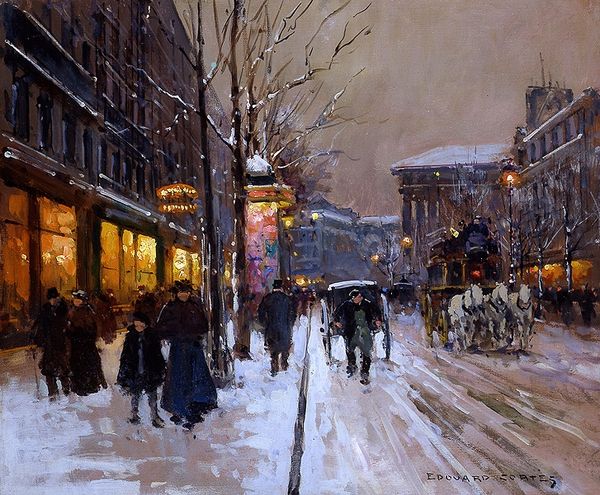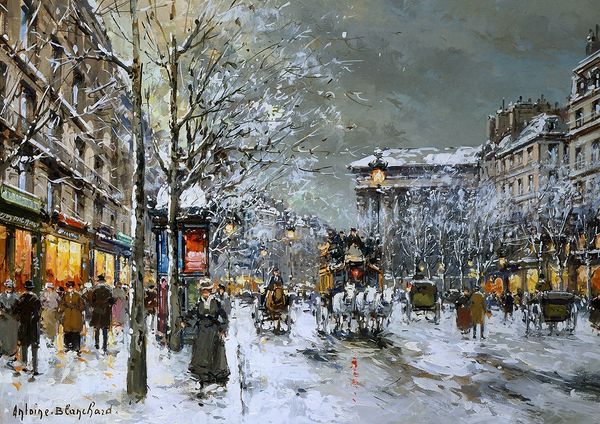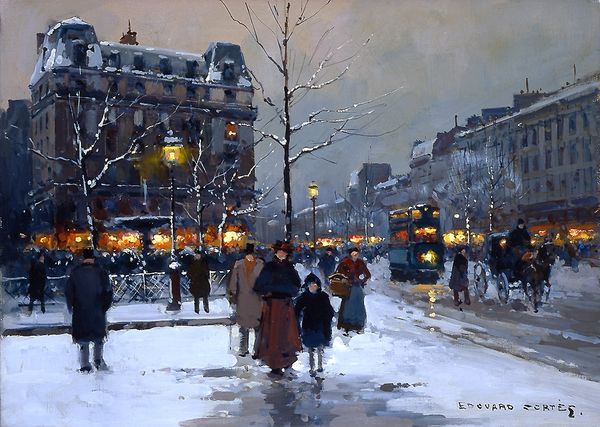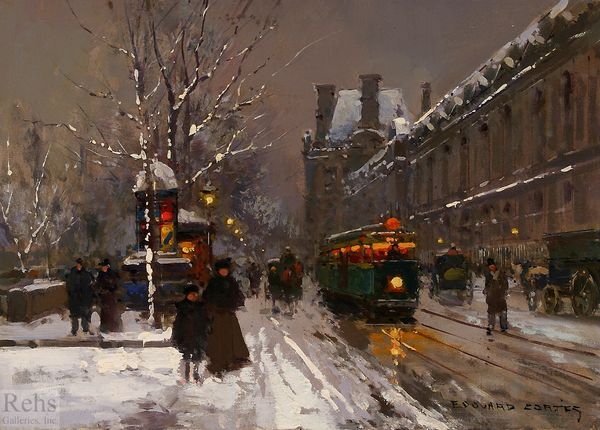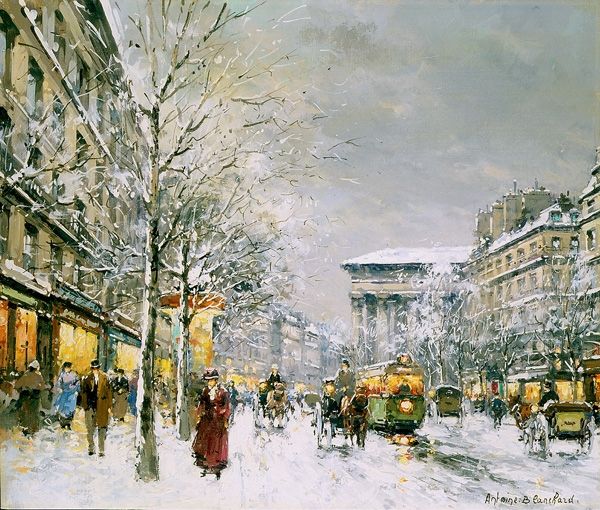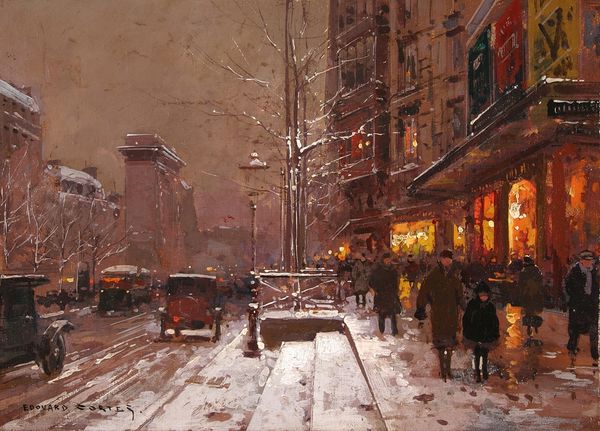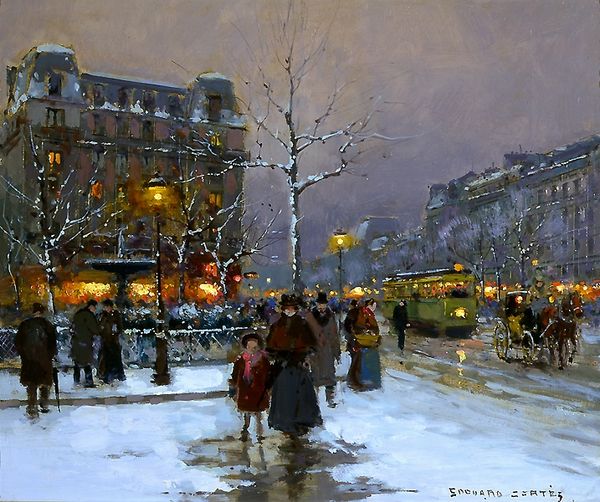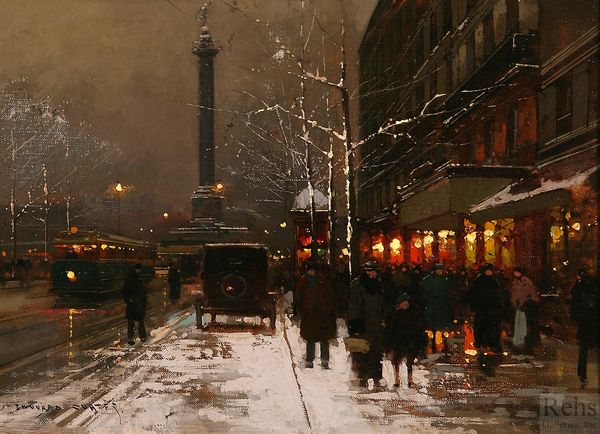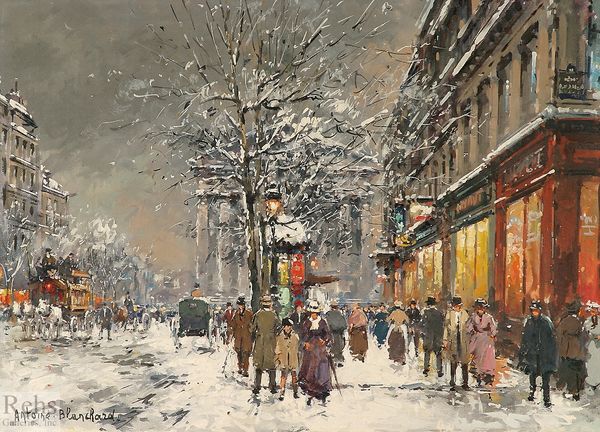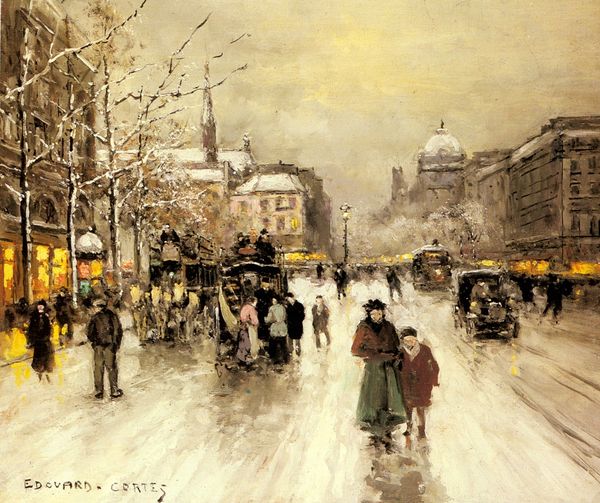
painting, oil-paint
#
tree
#
snow
#
urban landscape
#
painting
#
impressionism
#
street view
#
oil-paint
#
landscape
#
winter
#
urban cityscape
#
city scape
#
urban art
#
cityscape
#
genre-painting
#
street
#
building
Dimensions: 73 x 91 cm
Copyright: Edouard Cortes,Fair Use
Editor: Right now we're looking at Édouard Cortès’ "The Grands Boulevards Porte and Port Denis Martin," a snowy oil painting, potentially undated. There's a distinct stillness despite the busyness of the Parisian street scene, an urban landscape softened by winter. What can you tell me about it? Curator: I see a fascinating study in class and labour relations. Consider the materials: oil paint, mass-produced canvases. Cortès sold these widely; they weren't meant for museum collections initially, but for middle-class homes. What does the mass production of art mean for its perceived value and its role in society? Editor: So, it was meant for consumption? Did this affect how Cortès painted? Curator: Absolutely! Look at the subject: not heroic figures, but everyday life in Paris. Notice the clear separation in visual field, the workers bundled on the sidewalks contrasted with the privileged patrons of that horse-drawn bus, or perhaps the emerging new bourgeois. And consider the technique - Impressionistic strokes that suggest rather than define. How does this style democratize art making and appreciation? Editor: Interesting. I hadn't thought about the materials being relevant to the social commentary. Curator: It all ties in! Even the snow itself – a common element, readily available to everyone, covering the boulevard regardless of wealth or status. Think about the socio-economic stratification of even capturing this ephemeral image. Editor: This piece feels completely different now. I went from simply noticing winter in the city to pondering this web of production, distribution, and how class plays into representation. Curator: Exactly! Recognizing that everything from paint to postal distribution played a key role. Seeing how seemingly ‘fine art’ participates within systems of labor makes it worthwhile.
Comments
No comments
Be the first to comment and join the conversation on the ultimate creative platform.

